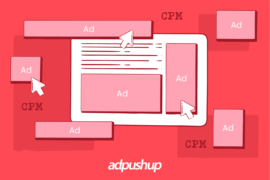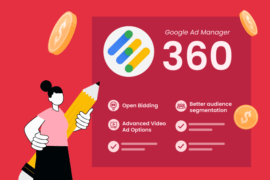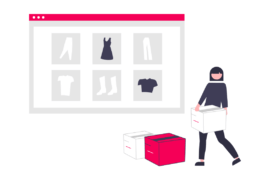Learn about Agency Trading Desks, their pros and cons, key features, and how ATDs work.
Brands have grown independent of agencies and their managed services due to the emergence of programmatic ad-buying platforms.
Most online (and some offline) media purchases may now be performed internally for less money, with more transparency and control over the information purchased.
Does that mean that, by today’s standards, agency trading desks are wholly irrelevant? Let’s investigate:
What Is an Agency Trading Desk?
A trading desk is a software or a package of services offered by a media company. The services cover planning, purchasing, managing, and optimizing programmatic advertising campaigns.
Compared to managing campaigns internally, using an agency trading desk (ATD) offers advertisers the key advantage of media buying at a reduced cost.
In fact, ATDs were initially able to provide competitive pricing on the media since they represented several clients and were able to secure better terms from prestigious publishers.
However, over time, the situation has changed. Leading internet advertising businesses like Google are now challenging benefits of employing Agency Trading Desks. As a result, the old agency business model is under threat.
Still, it has also evolved in many ways, becoming a more comprehensive service that goes beyond the initial definition of a trading desk set up and includes a variety of features and analytics tools.
Agency Trading Desks vs. Demand-Side Platforms
The capabilities of an ATD appear similar to the features provided by a self-serve demand-side platform (DSP). The important distinction is that agency trading desks typically provide some additional human labor on top of it.
Agency Trading Desks (ATD):
An ATD is a management platform within a media buying firm that centralizes programmatic media optimization and purchasing.
ATDs offer software development, account management, and data analytics services for the agency’s advertising customers.
They advise the best advertising approaches and aid in planning, allocating, and optimizing marketing budgets.
Trading desks may use one or more DSPs. Advertisers who use an agency trading desk’s services need direct access to the available media inventory.

Demand-Side Platform (DSP):
The supply-side platforms (SSPs) and ad exchanges are where marketers and agencies buy media from publishers. In contrast, a DSP is a piece of advertising technology (AdTech) that does this.
Typically, real-time bidding (RTB) transactions in the open market or the private marketplace (PMP) are used by DSPs to acquire impressions from SSPs/ad exchanges.
A DSP is a technological platform that links to supply-side platforms (SSPs) and ad exchanges to purchase ad impressions programmatically through real-time bidding auctions.
Through a single interface, it enables advertisers (who “demand” inventory) to manage, buy, and optimize programmatic ad inventory.
How Agency Trading Desk Evolved Over the Years?
Brands are demanding more clarity from agencies regarding fees, commissions, and media costs. Instead of just acting as a middleman and taking a cut of the profits, they want the ATD to act as an agent working for the customer.
Only a few agencies are open about the markup they apply to the programmatic media they provide. Some brands have taken their ad planning and buying in-house as a result of this.
ATDs have developed significantly over time and have expanded to include features provided by some of the most important AdTech platforms to adapt to advertisers’ current needs.
The technology employed by ATDs today is frequently based on proprietary advertising technology. Still, it may also include a licensed AdTech platform, including DSPs, ad servers, data-management platforms (DMPs), and many more.
Trading desks may provide their clients with a way to effectively harness technology, improve campaign performance, and raise the value of digital ad spending thanks to the integration of technological platforms.
Decentralization of trade-desk services is a trend we see concurrently as a result of client dissatisfaction with transparency.
Some of the larger holding companies have decentralized their trading-desk departments by reassigning their programmatic staff to specific agencies and departments in an effort to reduce service costs and provide their clients with greater transparency.

ATDs Advantages for Advertisers:
- Domain knowledge: Media buyers at ATDs are more informed and skilled in programmatic ad buying than advertisers who work internally at brands.
- Lower cost: ATDs can lower the cost of software, training, and operations by providing their services to a larger clientele.
Trading desks employ qualified personnel, manage numerous campaigns for significant clients, and have experience running marketing initiatives in diverse market niches.
In addition, they make use of their own technology, including data management platforms and ad servers, to collect audience-based data, analyze it, and derive insightful information for improved ad performance in the future.
- Access to detailed campaign data: This covers historical bidding information, optimization techniques, bidding models, and campaign response estimation.
- Campaign management that is outsourced: ATDs handle marketing campaigns so that brands don’t have to.
Disadvantages of ATDs
Nowadays, advertisers who purchase media can benefit from programmatic technology on their own, internally, for example, by integrating self-serve DSPs and white-label DSPs, which has reduced the need for ATDs.
Typically, this is less expensive and more open. Moreover, there are no additional hidden fees on top of the media cost (trading desks normally charge between 10% and 20% of the client’s advertising revenue).
According to a 2014 ANA and Forrester poll, 42% of marketers have reservations about agency transparency. The main issues were the effectiveness of media buying, performance indicators, viewability, ad serving, and costs.
Some major disadvantages of using ATD include:
- The client needs to be informed of the true cost of the media by ATDs.
- Agency trading desks keep a lot of their internal operations a secret.
- ATDs can integrate their client data.
- Clients of ATDs frequently pay enormous amounts of money for little or no gain.
Additionally, there’s lot of ambiguity around:
- Where the adverts are displayed?
- Why are they displayed in a particular place?
- Who may view the ads?
- How frequently do they see them?
- Which middlemen are engaged in the procedure?
- What they pay for advertisements and middlemen
- What are the commercials’ outcomes compared to the KPIs?
What does an Agency Trading Desk do?
Agency trading desks offer the following services to their clients:
- Purchase massive quantities of digital inventory, primarily through regulated real-time bidding auctions.
- Make connections with publishers, supply-side platforms (SSPs), and ad exchanges to obtain premium inventory in advance at a discount, use audience and behavioral insights, mark up the cost of media, and resell it to customers on demand.
- Aid in the planning, optimization, and allocation of advertising budgets.
- Provide guidance to brands on effectively contacting target consumers locally and internationally.
- Define the company’s goals and offer the best advertising tactics.
- Monitor campaign performance, evaluate results, and give clients data-driven audience insights.
- Offer CPO, CPL, or CPS and support typical pricing models, including CPM, CPC, CPI, and CPA.

Agency Trading Desk Usage Costs:
Following costs are associated with using agency trading desk:
- Costs for professional services (targeting, audience assessment)
- Data fees (data gathering, data analysis)
- Technical expenses (platforms, infrastructure),
- Additional agency fees
Agency fees may differ. For instance, platforms that help media businesses with programmatic sales often take 10 to 20 percent of the profits, according to an IAB analysis.
Therefore, the costs associated with using an agency trading desk should be discussed in advance to eliminate potential hidden costs.
Popular Agency Trading Desk Services
Over the past few years, numerous mergers and consolidations have resulted in significant changes for ATDs. Today, a large number of top advertising agencies maintain their trading desks:
- Affiperf (operated by Havas)
- Dentsu Audience Network, Amnet (operated by Dentsu/Carat)
- Varick (operated by MDC)
- Xaxis, [m]Platform (operated by WPP)
- Accuen (operated by Omnicom)
- VivaKi (Publicis)
- Cadreon, Magna Global (operated by IPG)
In Closing:
Similar to other players in the online advertising ecosystem, agency trading desks also face several difficulties.
Mainly because publishers are moving their programmatic operations in-house and abandoning partners who don’t offer sufficient levels of transparency and data ownership.
Despite the success many ATDs have had, they will need to change to satisfy the requirements and desires of today’s advertisers, much like other AdTech competitors.
A skilled AdTech partner could assist your company in bringing some of the common trade desk functionalities in-house, improving ad performance and bringing insightful data from your online campaigns.
Frequently Asked Questions:
Some advertising agencies offer their clients the option of outsourcing their programmatic media buying to an agency trading desk (ATD).
The trading desk handles most or all aspects of purchasing, administering, fulfilling, and reporting on media purchased on the advertising exchanges.
When marketers and agencies want to buy digital ad inventory, they go to a demand-side platform (DSP), an automated ad-buying platform.
A few types of ad inventory are in-stream videos, mobile ads on applications and the mobile web, and banner ads on websites. In addition, several ad exchanges include DSP integration.
Display Advertising, Video Advertising, Mobile Advertising and Native Advertising are the four main types of ads.

Shubham is a digital marketer with rich experience working in the advertisement technology industry. He has vast experience in the programmatic industry, driving business strategy and scaling functions including but not limited to growth and marketing, Operations, process optimization, and Sales.







